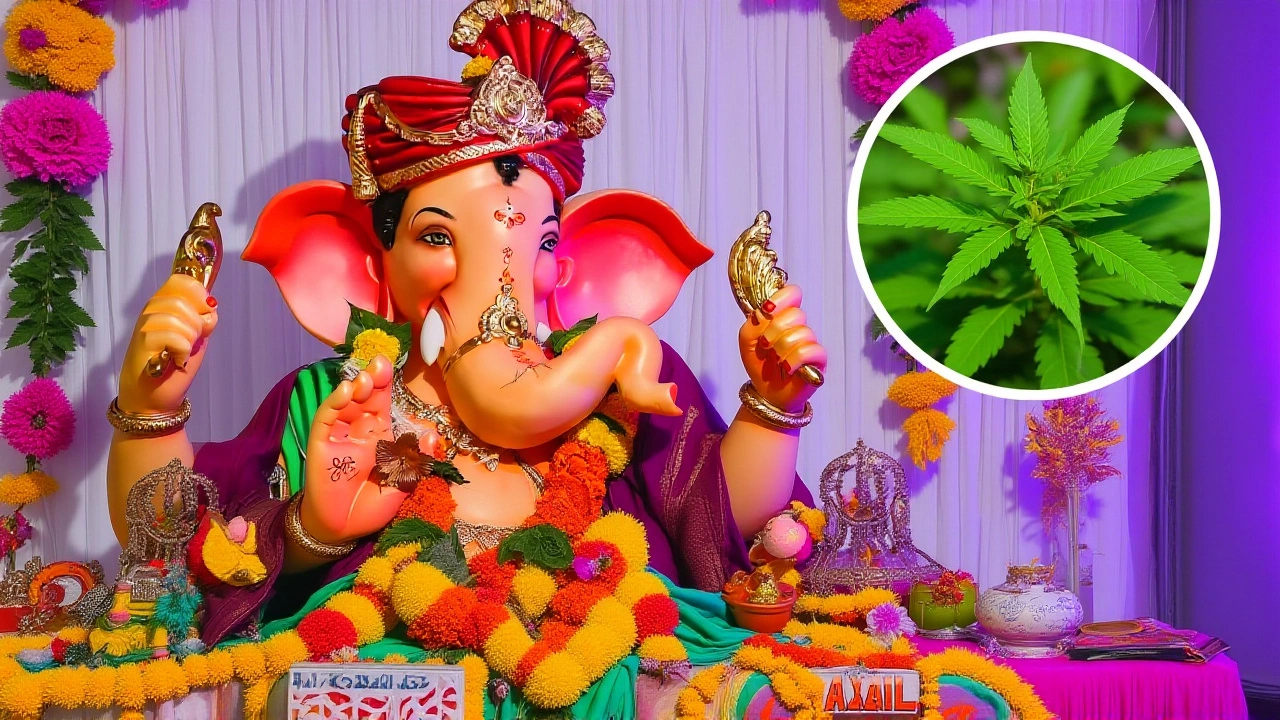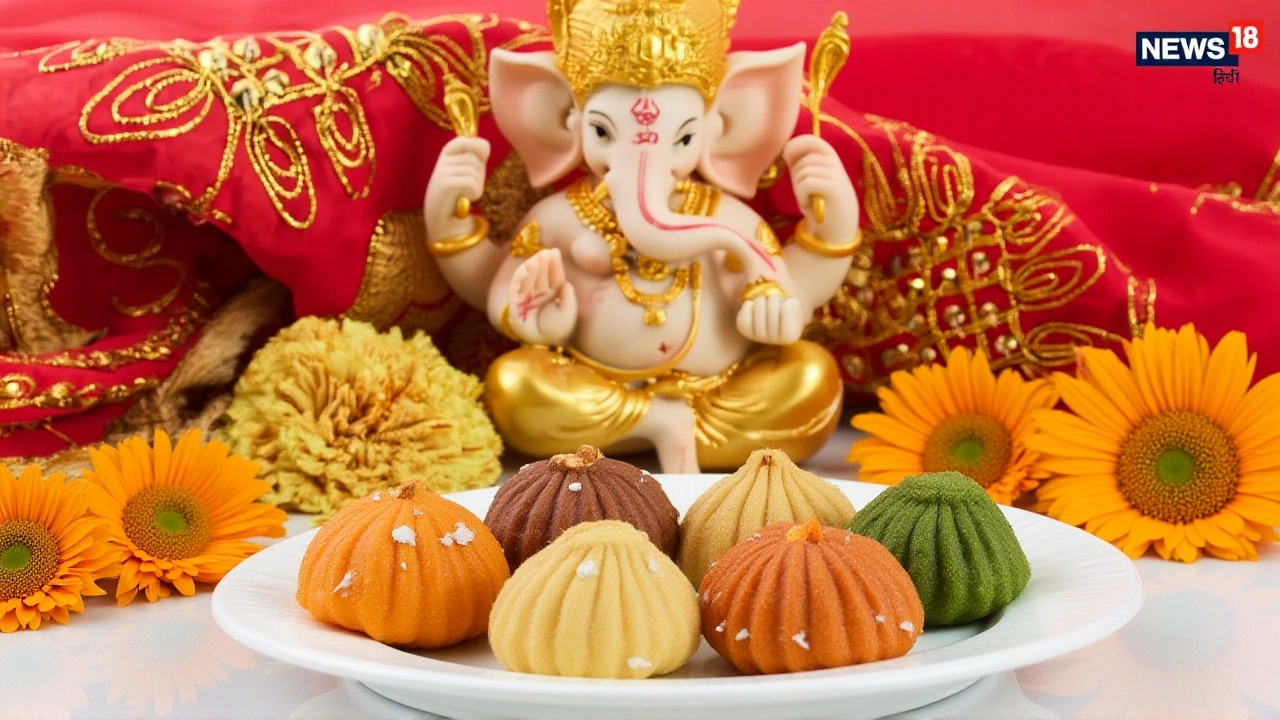Why Lord Ganesha Got an Elephant Head: Myths Behind Ganesh Chaturthi 2023

When Ganesh Chaturthi 2023 India kicked off on September 19, the country’s streets filled with the scent of modak and the rhythm of dholak, but the real buzz was about the age‑old mystery: why does Lord Ganesha sport an elephant’s head?
Setting the Scene: Ganesh Utsav Across India
The ten‑day celebration, known locally as Ganesh Utsav, lights up everything from Mumbai’s marine drive to the coastal lanes of Goa. In states like Maharashtra, Karnataka, and Gujarat, artisans craft towering clay idols, families gather for aarti, and vendors hawk sweets until the final ritual on Anant Chaturdashi, September 28. The festival isn’t just a party; it’s a reminder that Ganesha is the Pratham Poojya Dev—the first deity anyone worships before any other religious act.
The Gajasur Tale – An Elephant‑Headed Devotee
One version, championed by Jagran’s spiritual desk in New Delhi, places a demon named Gajasur at the heart of the story. Gajasur, an asura with an actual elephant’s head, was a die‑hard follower of Shiva. He meditated day and night on Mount Kailash, hoping to win the god’s favor.
"Shiva appeared before Gajasur and offered a boon," the Jagran article quoted the ancient text.
Instead of a typical wish for wealth or power, Gajasur asked Shiva to abandon Kailash and reside inside his own stomach. Shiva, ever the compassionate lord, obliged. He slipped into the demon’s belly, fulfilling the devotee’s unusual request. Some scholars argue that this act symbolises the guru entering the disciple’s inner world, but the myth also sets up a divine exchange that later justifies the elephant‑head transition.
Indra, Durvasa and the Parijat Flower – A Cosmic Mix‑Up
The News18 Dharm Desk offers a very different spin, dating back to the Ganesh Purana. Here, it’s the king of gods, Indra, strolling near the Pushpabhadrā River. He spots the celestial nymph Rambha and instantly falls for her. Just then, the irascible sage Durvasa passes by, handing Indra a rare Parijat blossom gifted by Vishnu.
"Whose head the Parijat flower touches becomes radiant and wise," Durvasa supposedly declared.
Indra, in a moment of vanity, places the flower on an elephant’s crown. The elephant’s glow fades, the creature becomes arrogant, and chaos ensues in the forest. To restore balance, the gods slice off the elephant’s head and graft it onto Ganesha’s body, transferring the flower’s boon—intellect and perseverance—to the deity.
The Classic Cut‑Off: Shiva’s Trident and a Child’s Defiance
Most of us grew up hearing the third tale, the one you’ll find on Navbharat Times’s Speaking Tree myth section. Young Ganesha guards his mother Parvati’s private chamber. When Shiva tries to enter, the boy blocks the doorway. Shiva’s temper ignites, and with a swing of his trident, he beheads the boy.
What happens next varies across texts. Some say the severed head drifted downstream on the Ganges, never to be recovered. Others claim the gods whisked it to heaven, preserving it in a hidden shrine. A few tantric traditions go further, suggesting the head merged with the Shiva Linga, turning the act into a cosmic symbol of creation and destruction.

Why an Elephant? Symbolism Behind the Head
Modern spiritual analysts, like those at Avtarit.co.in, argue that the elephant isn’t random. In Hindu thought, the elephant represents knowledge, strength, memory, and calm—qualities essential for navigating life’s obstacles. The term “Gajamukha” (elephant‑face) therefore signals that devotees should strive for patience and wisdom.
Even children’s story portals, such as Dadabhagwan.org, echo this: “Ganesha is the first god worshipped because he embodies the union of divine intellect (the elephant) and youthful vigor (the child).” Photographers from ABP Live captured the thriving street altars in December 2022, noting that locals often discuss the etymology of “Gajasur” — a blend of ‘gaja’ (elephant) and ‘asura’ (demon) — as a reminder that even formidable forces can become sources of wisdom.
How the Myths Shape Today’s Celebrations
During this year’s festivities, you’ll see idols with gleaming, intricately painted trunks, each curve a nod to those ancient narratives. Vendors sell “Gaj‑mukha” sweets, and priests chant verses that reference Shiva’s trident, Indra’s pride, and Gajasur’s devotion. For many, the story matters less than the lesson: humility and learning win over brute strength.
What’s Next? The End of the Festival and Beyond
As the last immersion ceremony approaches on September 28, families will gently lower the clay Ganesha into the water, symbolising a return of the divine energy to the cosmos. The act also reminds participants that every ending carries the seed of a new beginning—much like the elephant head that gave Ganesha his enduring identity.
- Key Fact: Ganesh Chaturthi 2023 began on September 19 and runs for ten days.
- Prime myth versions involve Gajasur, Indra with the Parijat flower, and Shiva’s trident.
- The elephant head symbolizes knowledge, strength, memory, and peace.
- Major states celebrating include Maharashtra, Goa, Gujarat, Karnataka, Telangana, Andhra Pradesh, and Madhya Pradesh.
- Media outlets covering the myths: Jagran, News18, Navbharat Times, ABP Live, Avtarit.co.in.
Frequently Asked Questions
Why is Lord Ganesha worshipped before any other deity?
Because Ganesha is considered the remover of obstacles and the patron of beginnings, Hindus invoke him first to ensure smooth progress in any venture, be it a wedding, a new business, or a simple daily routine. This tradition stems from mythic tales where his presence clears the path for divine actions.
What does the elephant head symbolize in the context of the festival?
The elephant embodies wisdom, strength, memory and calm—qualities that help devotees face life’s hurdles. By attaching the elephant’s head to Ganesha, the myths convey that intellect and patience are as crucial as physical power.
How do the different myth versions affect modern celebrations?
Each story adds a layer of cultural richness. In Maharashtra, folk songs recount Shiva’s trident; in Gujarat, street performances dramatise Indra’s vanity; and in Karnataka, schoolchildren retell the Gajasur devotion. These narratives keep the festival alive beyond ritual, turning it into a living storytelling tradition.
What is the significance of the immersion ceremony on Anant Chaturdashi?
The immersion, or Visarjan, symbolizes the return of divine energy to the universe and the impermanence of material forms. It reminds devotees that while the physical idol dissolves, the spiritual lessons—like overcoming obstacles—remain.
Are there regional variations in how Ganesh Chaturthi is observed?
Yes. In Maharashtra, massive public processions with towering idols dominate the streets. Goa favors modest home shrines and seafood feasts. Karnataka’s celebrations feature elaborate kolams (rangoli) and the famous “Ganesha Swayamvar” performances. Each region adds its own flavors while staying true to the core mythic themes.